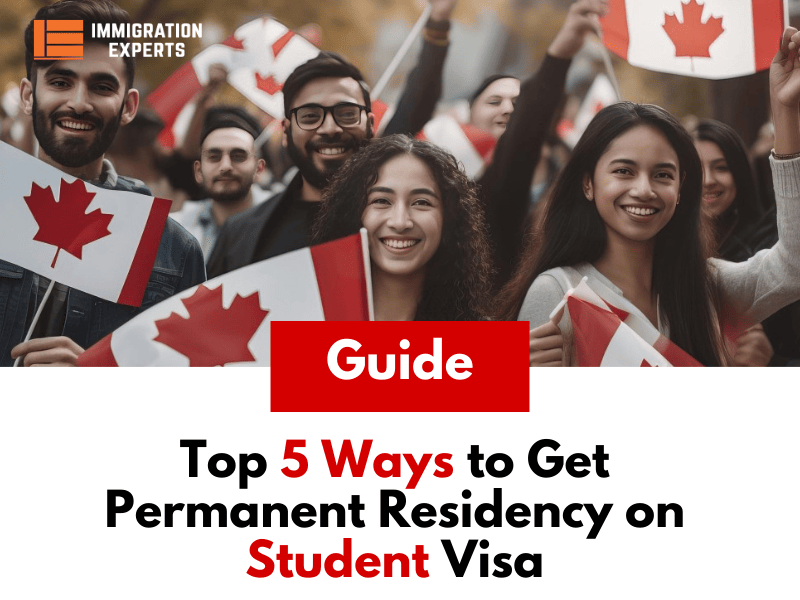051 8439995, 042 35911332

International students in Canada face tougher times securing permanent residency. This is because of rising global competition and more temporary residents within the country. The latest immigration plan spans 2024-2026. It targets granting permanent residency to 883,635 primary applicants under the economic category by 2026. This significantly impacts the residency landscape.
Transitioning to permanent residency is challenging for highly skilled individuals both outside and inside Canada. This includes international students. Immigration Minister Marc Miller is clear: being an international student doesn’t ensure Canadian permanent residency.
Things You Will Find In This Page
Focus on International Students with High-Demand Skills
Canada’s new immigration plan, unveiled on October 31 by the IRCC Minister, emphasizes aligning permanent residency opportunities with the labor market demands for international students with high-demand skills. This strategy aligns with Global Affairs Canada’s International Education Strategy, aiming to enhance international students’ workforce readiness. The plan involves fostering stronger connections among students, post-secondary institutions, and employers, as well as integrating work-based learning into the International Student Program.
The minister is updating the Post-Graduation Work Permit Program to aid essential industries with skill shortages. This involves providing more opportunities for international students and work permit holders with high-demand talents to stay in the country. Presently, those on post-graduate work Permits in 82 key occupations targeted by the Express Entry system have better chances for permanent residency than those in other occupations.
Paths to Canadian Permanent Residency
There are two primary paths for obtaining PR: Provincial Nominee Programs (PNPs) and the Express Entry System. Minister Miller emphasizes efforts to address labor shortages in crucial sectors like construction and healthcare. Trades, tech, and healthcare, being in demand, are focal points for all Canadian provinces and the federal Express Entry system.

Furthermore, Canadian immigration emphasizes individuals proficient in the French language. French, known for its beauty, presents an intriguing opportunity for learning. International students can enhance their chances of obtaining Canadian PR by focusing on these key areas.
Individual circumstances vary, but aligning with current immigration programs, international students can enhance their PR prospects by focusing on the following possibilities:
1. Select High-Demand Job Sectors
Consider entering skilled trades, tech, or healthcare sectors during studies. Certification in skilled trades earns 50 additional points in Express Entry, with a lower cutoff score. Canadian Provincial Nominee Programs (PNPs) prioritize these sectors in PR draws.
2. Learn Two Languages
Learning French offers a less competitive path to permanent residency. It fits into Francophone immigration with the lowest PR points cutoff in PNPs or Express Entry. The 2024–2026 Immigration Levels Plan aims for 6% Francophone immigration in 2024, 7% in 2025, and 8% in 2026.
3. Stacking Program
Boost your education level through program stacking. After a 1-year diploma, enroll in another program for more points towards PR and extend your Post-Graduation Work Permit (PGWP). Note: You can only obtain PGWP once in your lifetime.
Opt for a 4-year degree in high-demand sectors like healthcare. You can legally stay for the study’s duration and secure a PGWP of equal length. This significantly raises your PR chances compared to those with a 1-year diploma and a one-year PGWP.
4. Emphasize Immigration in Rural Areas
Rural immigration programs are often overlooked by international students favoring big cities. The IRCC is exploring extending the Rural and Northern Immigration Pilot (RNIP) to new towns and making it a permanent program.
Alberta’s rural renewal stream covers over 22 communities, and other provinces offer similar options for permanent residency. While city life is preferred, considering less common approaches enhances PR prospects.
5. Entrepreneurship
Entrepreneurship may not suit everyone, yet it’s a seed breaking barriers, growing against odds, and defying imagination.
Have an idea or entrepreneurial spirit? Pursue it with the start-up visa program, helping five students secure permanent residency. Though challenging, it’s a potential path to Canadian permanent residency and a settled life.
